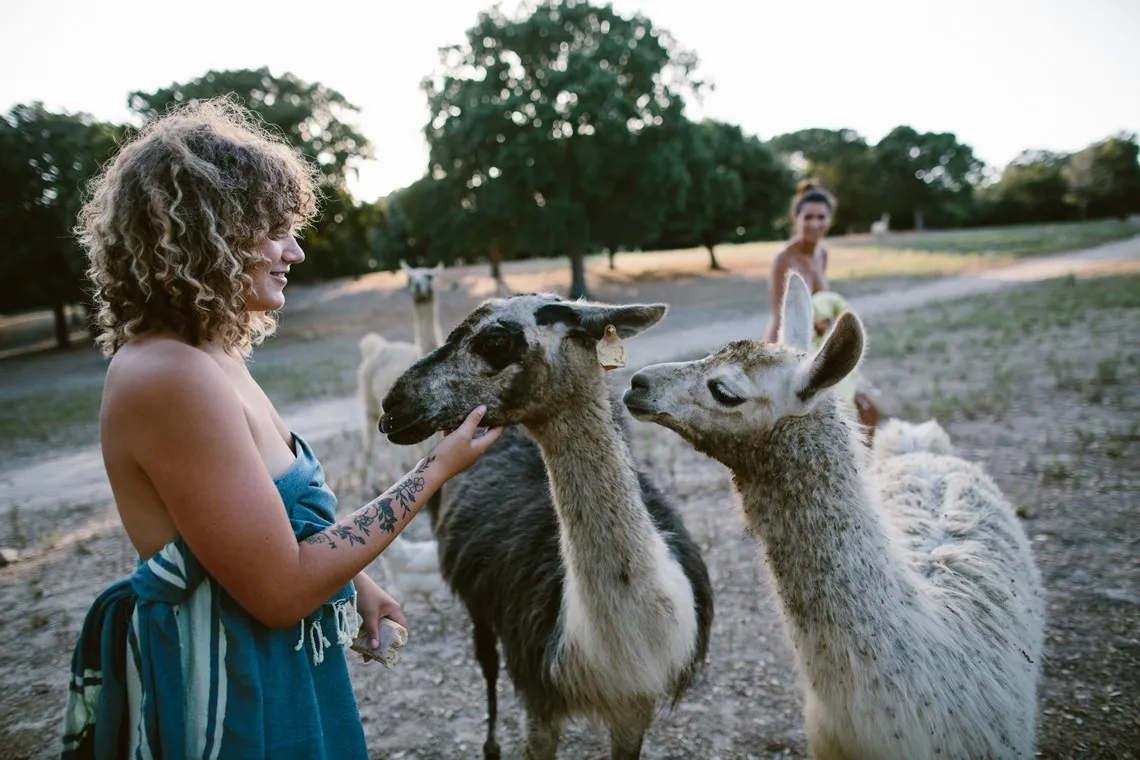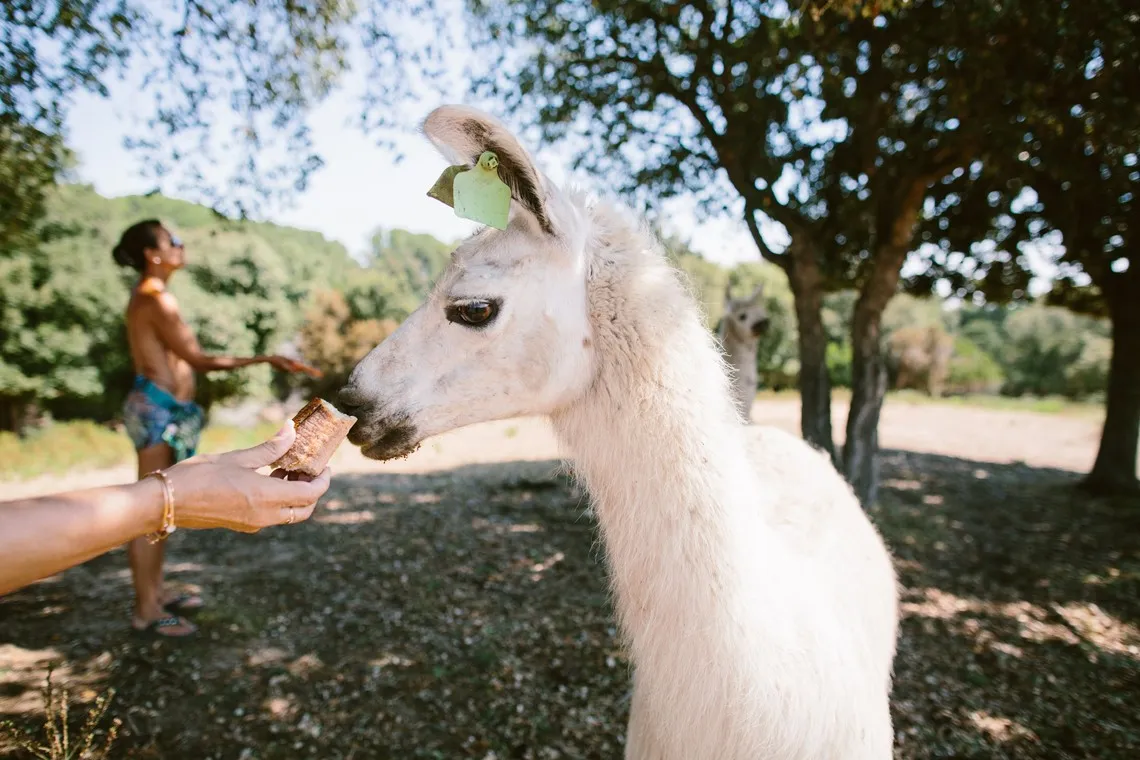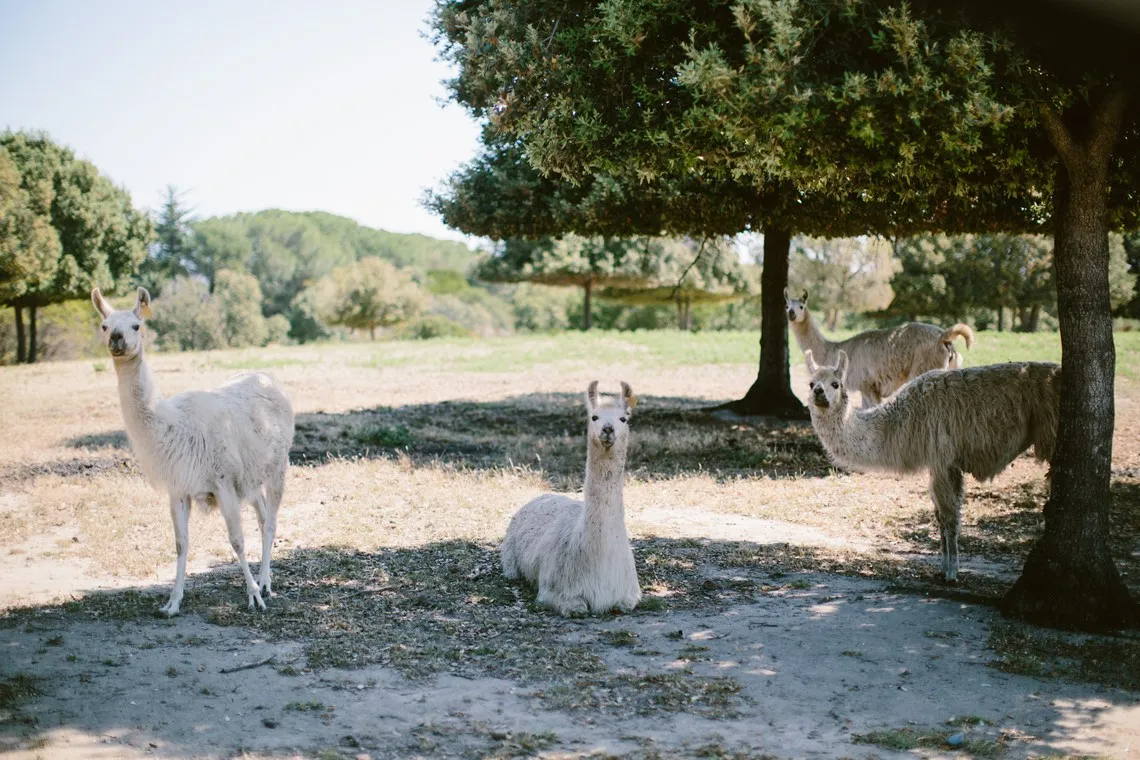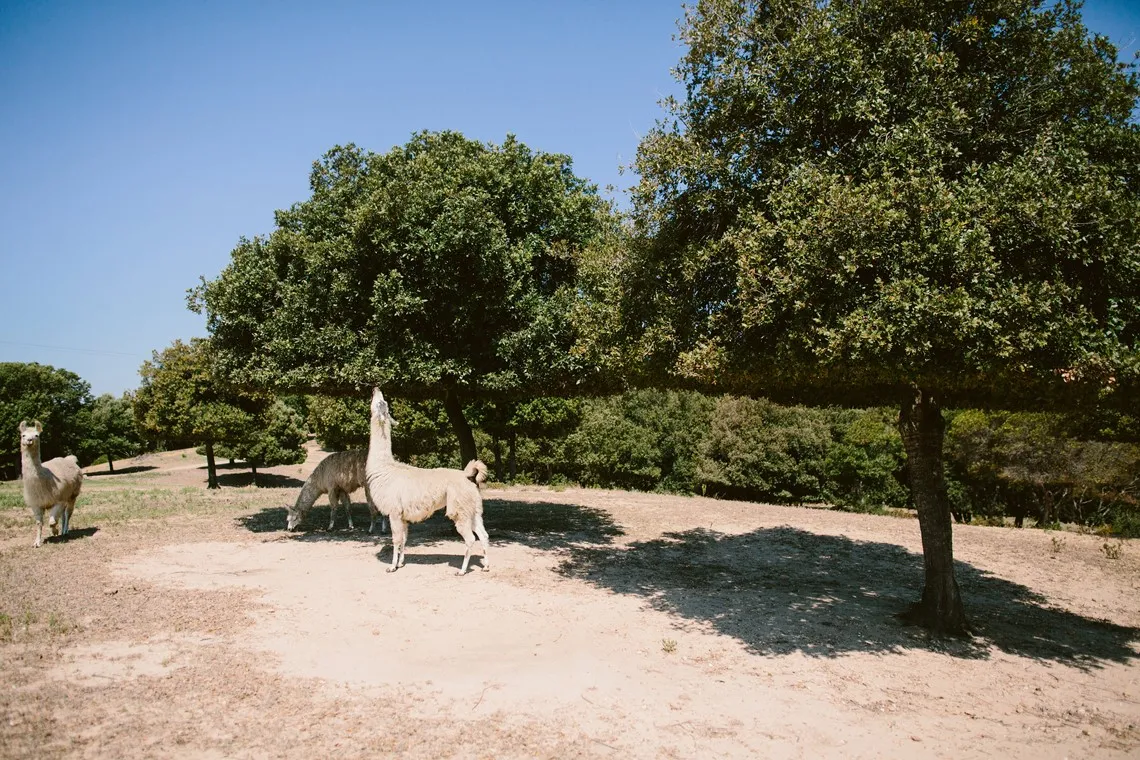Select your language
The llama farm
Llamas are also on holiday at Riva Bella naturist campsite!
In addition to its 4-star services, Riva Bella in Corsica also offers holidaymakers the opportunity to meet llamas. Present since 1989, the animals have had ample time to adapt to the seaside climate. At liberty for a good part of the year, the 70 llamas help to maintain the estate during the winter. Their job is to eat the undergrowth and young tree shoots to prevent the maquis from becoming too invasive and creating a fire hazard. The rest of the year, they enjoy the sun!
The fact that they naturally maintain the site is an important asset. Their movements in the field contribute to aerate and fertilise the soil, and they contribute to considerable energy savings in eradicating on-site maquis. They do not have hooves, but pads: thus, they do not damage the soil. Since they tend to deposit their excrement in the same place, this allows us to recover it for natural fertilizer.
Despite its seemingly haughty bearing, the llama is gentle and curious. It is a peaceful animal, spitting only to defend itself almost exclusively on its fellow creatures, rarely on man. It appreciates company and the encounter as much as holiday makers are intrigued by its characteristics.
If the average person knows that llamas come from Latin America and that they live in a herd, few are aware of how such a herd is organised. Their instinct is always the same, wherever they are: the males evolve separately while the unweaned young live with the females.
During reproduction, ovulation is induced by the male's mating. One of the first consequences of this phenomenon is that there is no particular mating season. A young female is ready for reproduction at 14 - 18 months, whereas a young male is ready for reproduction at two and a half to three years of age.
The average gestation period is 350 days. Most births take place during the day, between 5 a.m. and 2 p.m. with no great risk of complications. It is rare that a llama gives birth to twins. The young can be weaned at around 6 months. We also choose to leave the calf with its mother: it will then continue to suckle for much longer. In any case, the baby should be separated at least one month before the next birth.
The llama is a herbivorous mammal of the camelid family. It chews its cud, has 3 stomachs, and Riva Bella llamas eat what they find in the maquis: brambles, oak leaves, pine or juniper needles, scotch broom, mastic grass, strawberry tree... but when one is in constant contact with humans, greed is contagious and llamas are tempted by other foods. Thus, llamas will feast on dry bread, vegetable peelings and fruits. In any case, they are real friends that you can observe, take pictures of and feed.
Llamas are not only useful for entertainment or maintenance of the estate. The campsite also uses their wool to insulate the attics and walls of the bungalows. Riva Bella sends some of the animals' wool to Lana Corsa, a Corsican wool processing workshop based in Saliceto, in the heart of the Isle of Beauty. The campground also offers weaving and felting workshops with llama wool. Shearing of Riva Bella llamas is performed on site with shears powered by solar energy.
The llamas participate in Riva Bella's ecotourism initiative. They help to maintain the resort naturally by aerating and fertilising the soil through their movements and the 70 hectares of the site are cleared of make-up all year round, thus avoiding a lot of energy expenditure.










